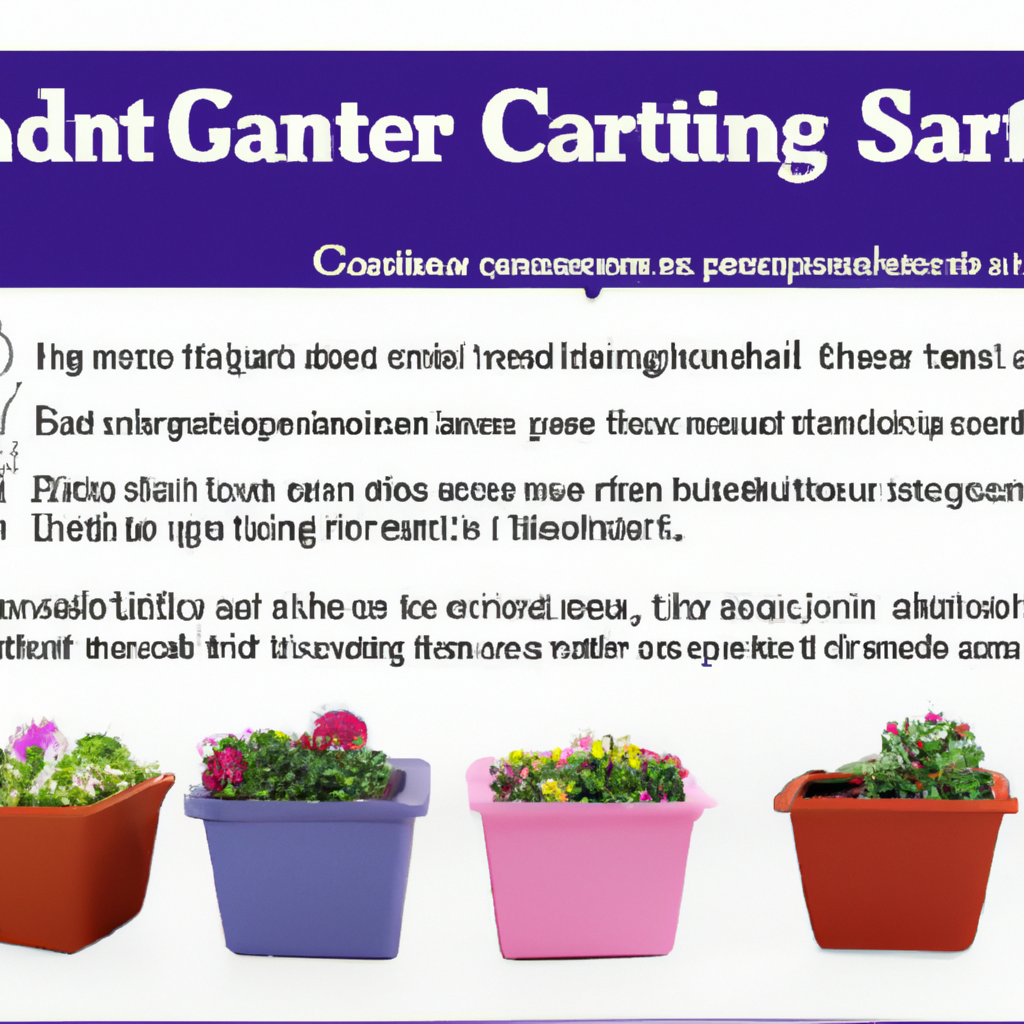
Are you eager to start a container garden but unsure about what size containers to use? Look no further! This article, “A Guide to Container Gardening: Size Chart,” will provide you with all the information you need to choose the perfect-size containers for your plants. From small herbs to larger vegetables, this comprehensive size chart will ensure that your garden thrives in its new home. Whether you have limited space or simply prefer the convenience of container gardening, this guide will help you make informed decisions and create a lush and flourishing oasis right in your own backyard.

Container Gardening Basics
Container gardening is a popular and convenient way to bring natural beauty into your home or outdoor space. Whether you have a spacious garden or a limited amount of space, container gardening allows you to cultivate a stunning array of plants, flowers, and even vegetables. In this comprehensive guide, we will walk you through the basics of container gardening and provide you with all the information you need to get started. From choosing the right container size to understanding the importance of drainage holes, we’ll cover it all. So let’s dive in and discover the world of container gardening!
Choosing the Right Container Size
One of the first considerations when starting your container garden is selecting the appropriate container size. The size of your container will directly impact the growth and health of your plants. It’s essential to choose a container that provides enough space for the roots to develop and allows for adequate water retention and nutrient absorption.
The size of your container will depend on the type of plant you wish to grow. Generally, small containers are suitable for herbs and smaller flowering plants, while larger containers are necessary for shrubs and vegetables. When selecting a container, consider the mature size of the plant and choose a container that provides enough space for the root ball and growth.
Understanding Container Capacity
It’s important to understand the capacity of your container before planting. Each container has a specific capacity, which refers to the amount of space available for the plant’s root system and the volume of soil it can hold. Choosing a container with the appropriate capacity ensures your plants have enough room to grow and thrive.
You can determine the container’s capacity by checking the label or specifications provided by the manufacturer. It’s also helpful to consider the mature size of the plant and the required volume of soil for healthy growth. As a general rule, choose a container with a capacity at least two times larger than the root ball of your plant.
Importance of Drainage Holes
Drainage holes are an essential feature of any container used for gardening purposes. These holes allow excess water to escape, preventing waterlogged roots and root rot. Without proper drainage, plants can suffer from stunted growth, wilted leaves, and even death.
When selecting a container, ensure that it has adequate drainage holes at the bottom. These holes should be large enough to allow water to flow freely but small enough to prevent soil from escaping. Additionally, you can place a layer of stones or gravel at the bottom of the container to further enhance drainage.
Selecting a Suitable Planting Medium
A suitable planting medium, also known as potting mix or soil, is crucial for the success of your container garden. Unlike traditional gardening, where plants rely on the nutrients in the ground, container plants depend on the quality of the soil you provide. It’s important to select a planting medium that offers good drainage, adequate moisture retention, and the necessary nutrients for plant growth.
You can purchase pre-mixed potting soil from a garden center or create your own mixture using a combination of materials like peat moss, perlite, vermiculite, and compost. It’s important to choose a mixture that suits the specific needs of your plants and provides the right balance of nutrients and moisture.
Considerations for Container Placement
Container placement plays a significant role in the overall success of your container garden. Different plants have different sunlight and temperature requirements, so it’s important to carefully consider where you place your containers.
Most plants require at least six hours of direct sunlight per day, so it’s essential to place your containers in an area that receives adequate sunlight. However, if you’re growing plants that prefer shade, look for a location that provides partial or full shade throughout the day. Additionally, consider the temperature requirements of your plants and ensure they are placed in an area that meets those needs.
Small Containers
Small containers can be a perfect choice for those with limited space or individuals who enjoy creating smaller, more intimate displays of plants. These containers are easy to manage and can be placed on windowsills, balconies, or small outdoor spaces. Let’s explore the world of small container gardening to create a beautiful and practical display.
Types of Small Containers
When it comes to small containers, the options are vast. You can choose from traditional clay pots, plastic pots, hanging baskets, window boxes, or even repurposed items like old teacups or tin cans. The key is to select a container that suits your style and provides adequate space for the plant’s root system.
Common Plants for Small Containers
Not all plants are suitable for small containers as some plants need more room to grow. However, several plants thrive in small containers and can create stunning displays. Some popular choices for small containers include herbs like basil, mint, and rosemary, as well as small flowering plants like marigolds, impatiens, and petunias. Succulents and cacti are also excellent options as they require minimal care and can thrive in small spaces.
Tips for Successful Small Container Gardening
To ensure success with your small container garden, there are a few tips to keep in mind. First, choose plants that have similar sunlight and water requirements, as this will simplify care and maintenance. Additionally, be mindful of overwatering, as small containers can dry out quickly. Finally, consider using a slow-release fertilizer or regularly fertilizing your plants to ensure they receive the necessary nutrients for optimal growth.
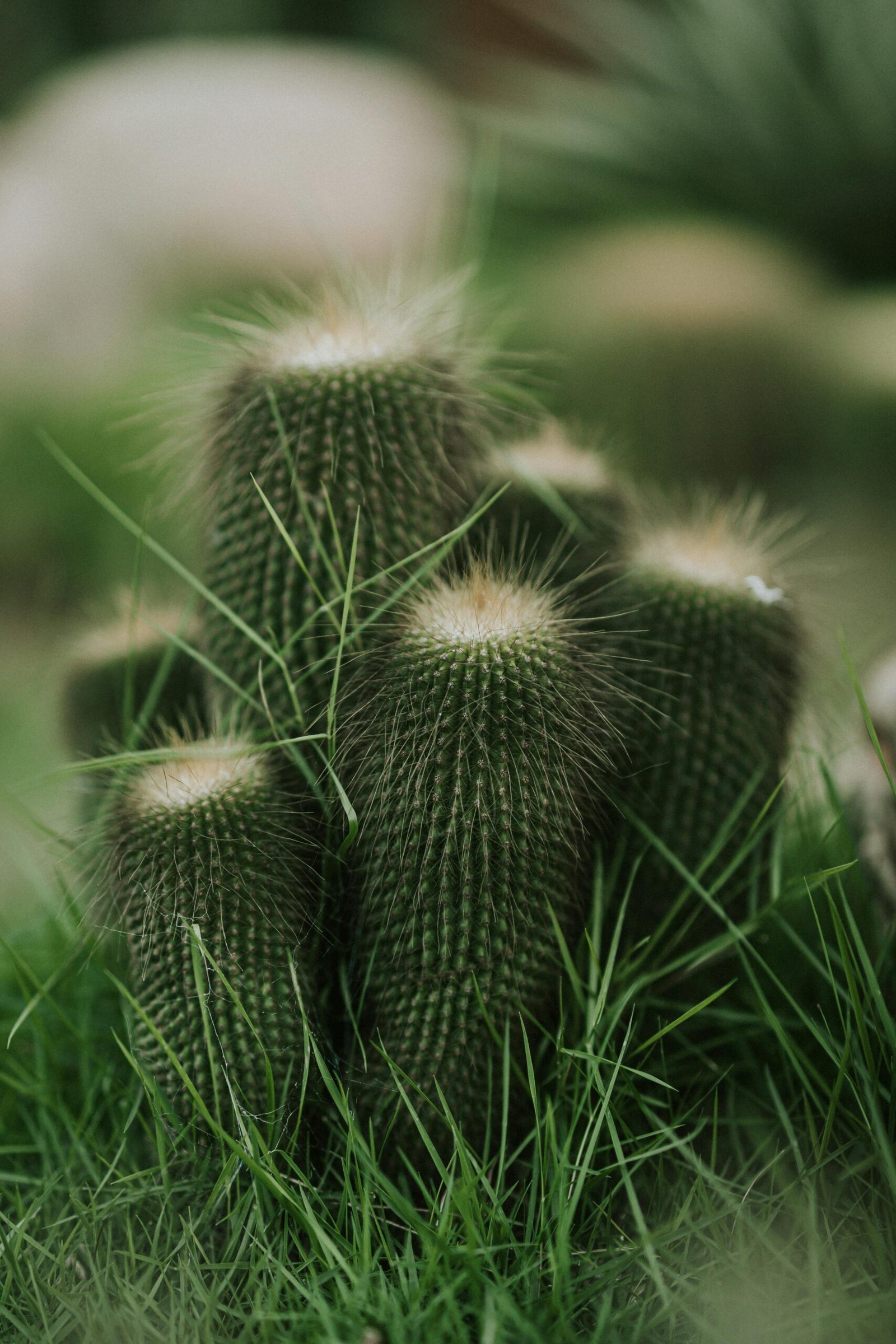
Medium Containers
Medium containers offer a versatile option for container gardening, providing more space for the root system and the ability to grow a wider range of plants. These containers are suitable for those who require a larger display of plants or those who want to experiment with different plant varieties. Let’s explore the world of medium container gardening and discover the possibilities it offers.
Types of Medium Containers
Medium containers come in various shapes, sizes, and materials, allowing you to find the perfect match for your gardening needs and personal style. Consider options like ceramic pots, wooden barrels, or fiberglass containers for a touch of elegance and durability. Remember to choose a container that is large enough to accommodate the root system of your chosen plants while still fitting comfortably in your space.
Recommended Plants for Medium Containers
Medium containers open up a world of possibilities when it comes to plant selection. You can grow a wide range of flowers, herbs, vegetables, and even small shrubs or ornamental trees. Some popular choices for medium containers include roses, geraniums, tomatoes, peppers, dwarf fruit trees, and spring bulbs like tulips and daffodils. The key is to choose plants that are suitable for your climate and provide adequate space for growth.
Maintaining Medium Containers
To ensure your medium container garden thrives, it’s important to provide proper maintenance. Regularly check the moisture level of the soil and water your plants accordingly. It’s also beneficial to periodically fertilize your plants to replenish nutrients. Pruning and deadheading flowers can promote new growth and prolong flowering. Finally, be vigilant for any signs of pests or diseases and address them promptly to prevent further damage.
Large Containers
Large containers offer the opportunity to create stunning focal points in your garden or outdoor space. These containers are perfect for growing larger plants, shrubs, or even small trees, allowing you to bring a touch of natural beauty to even the most limited areas. Let’s explore the world of large container gardening and discover the endless possibilities it holds.
Types of Large Containers
There is a wide variety of large containers available to suit different aesthetic preferences and gardening needs. Consider options like ceramic planters, wooden planters, or even repurposed items like old wine barrels or metal tubs. Remember to choose a container that complements the overall style of your garden and provides ample space for your chosen plants.
Ideal Plants for Large Containers
Large containers offer the perfect environment for plants that require more space and have a larger root system. Consider planting small trees like citrus or fig, ornamental grasses, bushes like lavender or hydrangea, or even climbing plants that can be trained to grow upwards. The choice of plants is practically endless, so feel free to get creative and design a captivating display.
Caring for Large Containers
Caring for large containers requires some additional considerations due to their size and weight. Ensure that the container is placed on a stable surface that can support its weight, especially if it is filled with a substantial amount of soil. Regularly check the moisture level of the soil and water accordingly, as larger containers tend to retain moisture for longer periods. Pruning, fertilizing, and addressing pests or diseases are also crucial for maintaining the health and vibrancy of the plants in large containers.
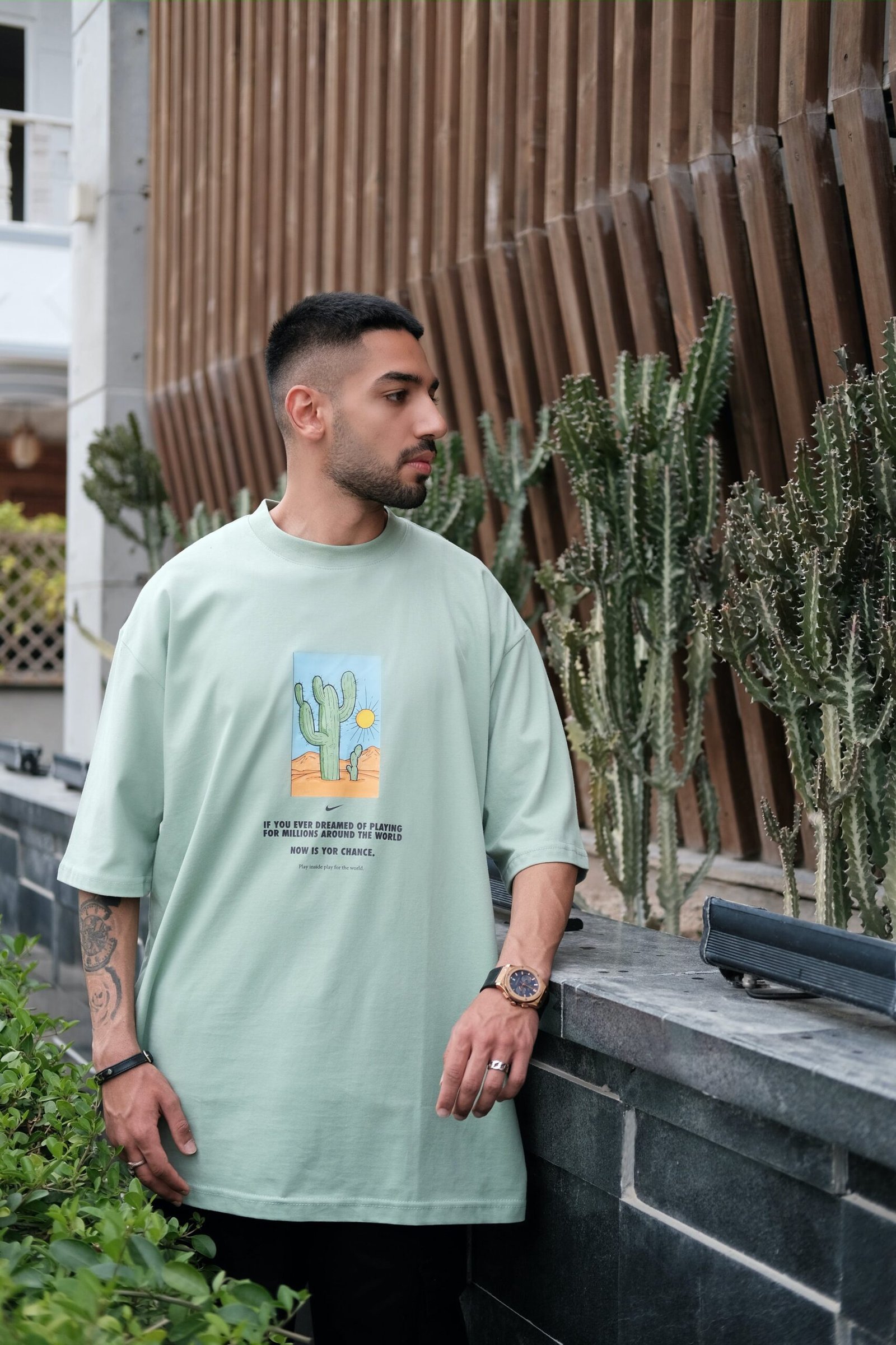
Vertical Gardens in Containers
Vertical gardening is a popular trend in container gardening, allowing you to maximize space and create a striking visual impact. By utilizing vertical containers, you can transform walls, fences, or any vertical structure into an abundant garden. Let’s explore the world of vertical gardens in containers and uncover the possibilities they offer.
Choosing Vertical Containers
When it comes to vertical containers, you have several options to choose from. Consider using wall-mounted planters, hanging pockets, or even repurposed materials like pallets or shoe organizers. The key is to select containers that are sturdy, provide adequate space for plant growth, and can be securely attached to your desired vertical structure.
Suitable Plants for Vertical Growing
Not all plants are suited for vertical growing, as some require more support and space to spread out. However, there are many plants that thrive in vertical containers and can create a stunning display. Consider planting trailing plants like ivy, vines like jasmine or honeysuckle, or even vegetables like cherry tomatoes or cucumbers. Additionally, using different plant varieties with varying growth habits can add depth and interest to your vertical garden.
Maintenance of Vertical Gardens
Maintaining a vertical garden requires attention to detail and regular care. Since vertical containers tend to dry out more quickly than traditional containers, it’s important to monitor the moisture level of the soil and water accordingly. Regularly check for any unruly growth or plants that need pruning or training. Also, ensure that the structure supporting your vertical containers remains secure and stable to prevent any accidents.
Hanging Baskets
Hanging baskets are a delightful way to add color and beauty to any space, whether indoors or outdoors. They provide a vertical element to your garden and can be hung from trees, hooks, or pergolas, creating a cascading display of flowers and foliage. Let’s discover the world of hanging basket gardening and explore the possibilities it offers.
Types of Hanging Baskets
Hanging baskets come in various shapes, sizes, and materials, allowing you to choose the perfect option for your gardening needs and personal style. Consider options like wire baskets, coco fiber baskets, or even macrame hangers for a bohemian touch. Select a hanging basket that complements the colors and textures of your chosen plants and provides enough depth for root growth.
Flowers for Hanging Baskets
When it comes to selecting flowers for hanging baskets, the options are vast. You can choose a single type of flower for a uniform display or combine different varieties for a vibrant and diverse arrangement. Popular choices for hanging baskets include petunias, lobelia, fuchsias, geraniums, and million bells. Consider the sunlight requirements and growing habits of the flowers you select to ensure they thrive in the hanging basket environment.
Tips for Hanging Basket Gardening
To ensure success with your hanging baskets, there are a few tips to keep in mind. First, choose the right location for your hanging basket, ensuring it receives the appropriate amount of sunlight for your chosen plants. Water your hanging basket regularly, making sure not to let it dry out completely. Deadhead spent flowers to encourage new growth and prolong flowering. Finally, be mindful of the weight of your hanging basket and ensure it is securely attached to prevent accidents.
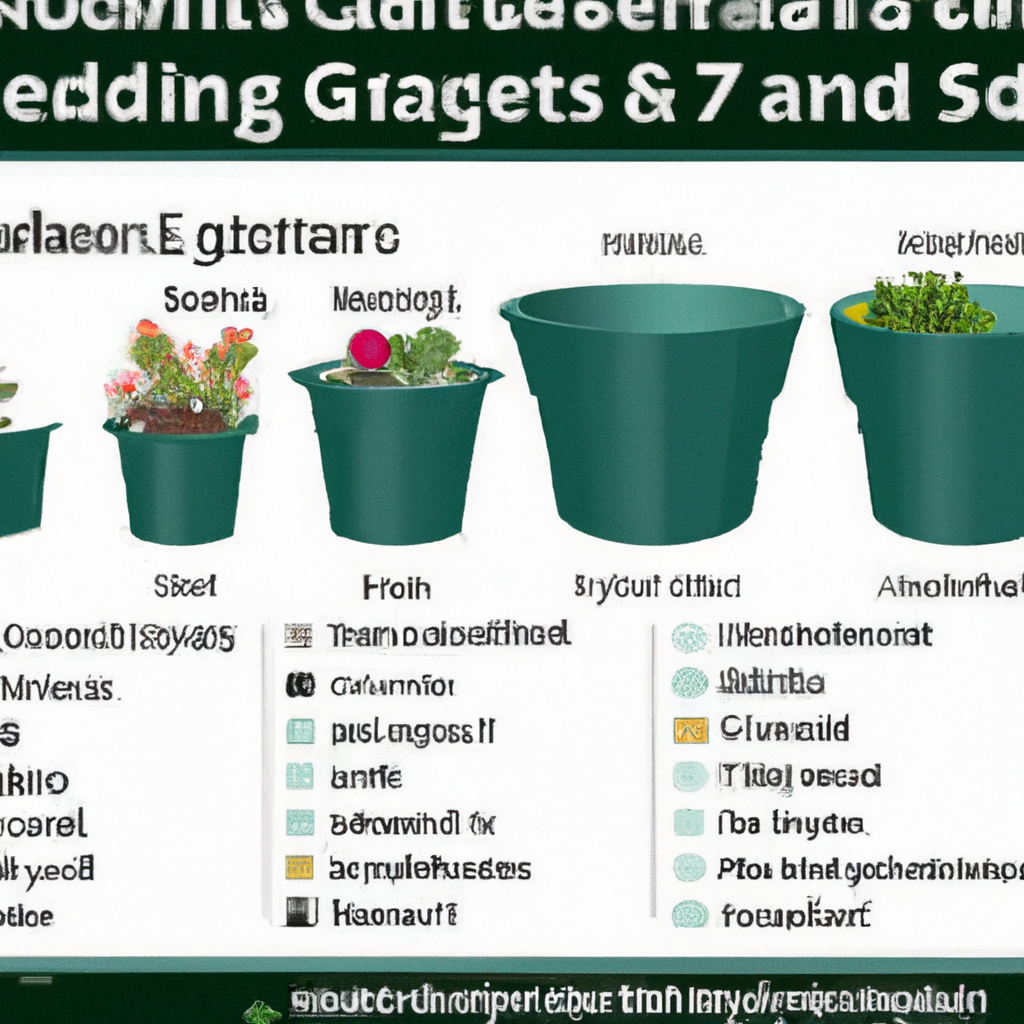
Window Boxes
Window boxes offer a charming way to enhance the exterior of your home or add a touch of greenery to your windowsills. These compact and versatile containers can accommodate a variety of plants and can transform the look of any window or balcony. Let’s explore the world of window box gardening and discover the possibilities it holds.
Different Window Box Styles
Window boxes come in different styles, allowing you to customize the look of your exterior or match the architectural features of your home. Consider options like wooden window boxes for a rustic feel, wrought-iron window boxes for a classic touch, or modern fiberglass window boxes for a sleek and contemporary look. Choose a window box that complements the overall style of your home and provides sufficient depth for root growth.
Best Plants for Window Boxes
When selecting plants for your window boxes, consider the sunlight and temperature exposure of the chosen location. For windows that receive full sun, opt for sun-loving plants like geraniums, petunias, or marigolds. If your window is in a shady or partially shaded area, choose plants like impatiens, begonias, or fuchsias that thrive in lower light conditions. Additionally, consider trailing plants or vines to create a cascading effect and add visual interest.
Essential Window Box Care
Maintaining your window boxes is essential for their longevity and the health of your plants. Regularly check the moisture level of the soil and water accordingly, as window boxes tend to dry out more quickly due to their exposure to direct sunlight and wind. Fertilize your plants regularly to replenish nutrients, and prune or deadhead as necessary to encourage new growth. Ensure that your window boxes are securely attached to prevent accidents, especially during inclement weather.
Raised Bed Containers
Raised bed containers offer numerous benefits for gardening enthusiasts, providing improved drainage, enhanced soil quality, and ease of access. These containers are ideal for individuals with limited mobility or those who want to create a specific growing environment for their plants. Let’s explore the world of raised bed container gardening and discover the advantages it offers.
Benefits of Raised Bed Containers
Raised bed containers provide several advantages over traditional in-ground gardening. The elevated nature of raised beds allows for improved drainage, preventing waterlogged roots and reducing the risk of root rot. Additionally, you have greater control over the soil quality and can create the ideal growing environment for your plants. Raised beds also make tasks like planting, weeding, and harvesting much more accessible, particularly for those with physical limitations.
Popular Plants for Raised Bed Gardening
Raised bed containers are versatile and can accommodate a wide range of plants, including vegetables, herbs, flowers, and even small shrubs. Consider popular choices like tomatoes, peppers, lettuce, beans, basil, or even dwarf fruit trees. The deep soil in raised beds provides ample space for root growth and allows for a more efficient use of space, making them ideal for individuals with limited gardening areas.
Managing Raised Bed Containers
Maintaining raised bed containers is relatively straightforward, but a few key considerations can ensure the success of your garden. Regularly check the moisture level of the soil and water accordingly, as raised beds tend to dry out more quickly. Assess the nutrient content of the soil and amend as necessary to provide optimal growing conditions for your plants. Managing weeds and pests is also crucial, as the elevated nature of raised beds can attract unwanted visitors. Finally, monitor the overall health and growth of your plants and address any issues promptly to prevent further damage.
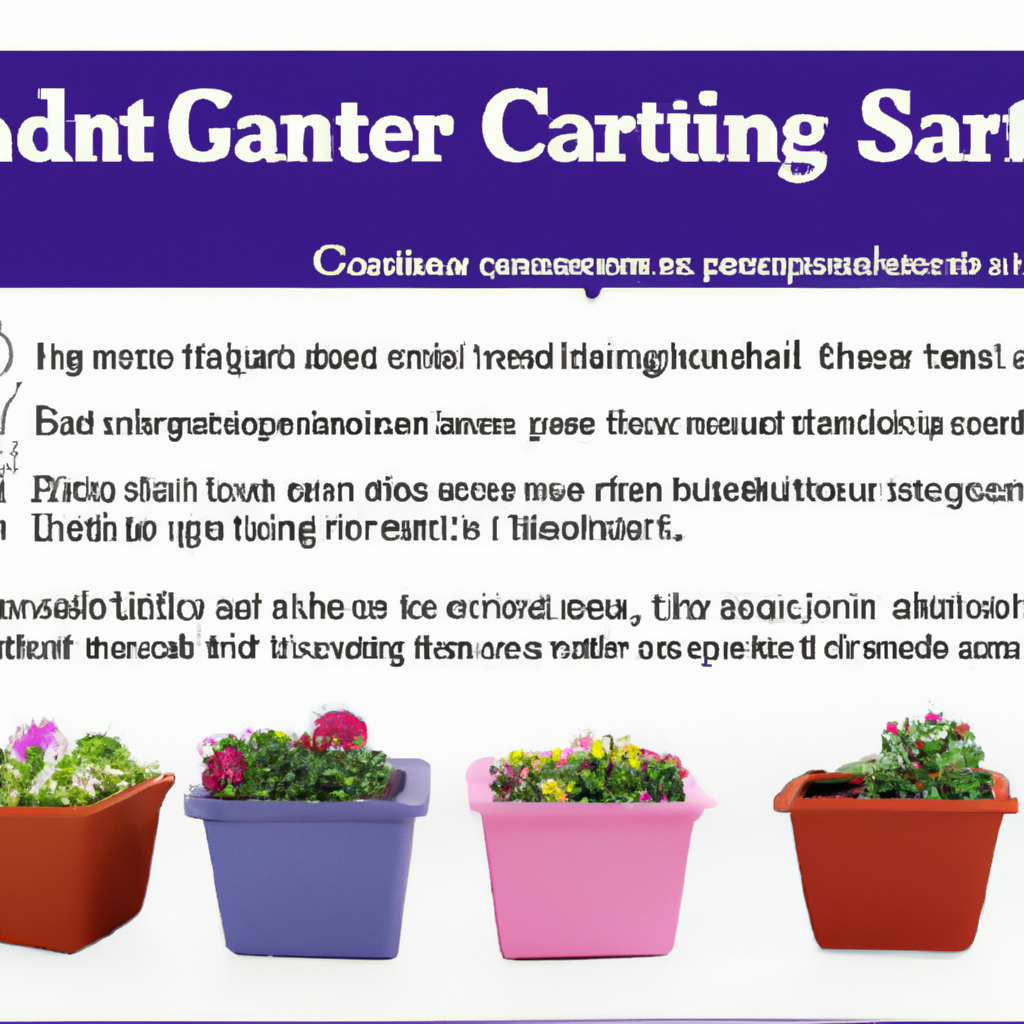
Whiskey Barrel Gardening
Whiskey barrels offer a unique and charming alternative for container gardening, bringing a touch of rustic elegance to any outdoor space. These barrels not only provide a beautiful and decorative display but also offer practical advantages for gardening enthusiasts. Let’s explore the world of whiskey barrel gardening and discover the benefits it holds.
Advantages of Whiskey Barrels
Whiskey barrels offer several advantages when utilized as gardening containers. Their sturdy construction allows them to withstand the elements and provide a durable growing environment for plants. The natural oak material used in whiskey barrels promotes healthy root growth and provides insulation for the soil, which can help regulate temperature fluctuations. Additionally, the large size of whiskey barrels allows for the cultivation of a wide range of plants, including vegetables, flowers, and small fruit trees.
Suitable Plants for Whiskey Barrels
Whiskey barrels provide an excellent environment for various plant varieties. Consider planting tomatoes, peppers, zucchini, or herbs like thyme or sage for a productive vegetable garden. For a burst of color and fragrance, opt for flowers like geraniums, petunias, or lavender. Small fruit trees like apple or cherry can also thrive in whiskey barrels, providing both beauty and a fruitful harvest.
Maintaining Whiskey Barrel Gardens
Maintaining a whiskey barrel garden requires attention to detail and regular care. Ensure that the barrel has adequate drainage holes at the bottom to prevent waterlogging and root rot. Regularly check the moisture level of the soil and water accordingly, as the oak material in the barrel can help retain moisture. Fertilize your plants regularly to provide them with the necessary nutrients for growth. Prune and prune as necessary to promote plant health and prevent overcrowding. Lastly, monitor the overall condition of your whiskey barrel garden, particularly the integrity of the barrel itself, to ensure it remains functional and aesthetically pleasing.
Trellis Containers
Trellis containers offer a unique and space-saving solution for container gardening, allowing you to create vertical displays and maximize growing space. These containers are perfect for climbing plants, which can beautifully adorn walls, fences, or structures. Let’s explore the world of trellis container gardening and discover the possibilities it holds.
Choosing Trellis Containers
When selecting trellis containers, it’s important to choose options that are sturdy and provide ample space for plant growth. Consider using containers with built-in trellises or choose standalone trellises that can be attached to your desired container. Ensure that the trellis container is securely anchored, as climbing plants can become heavy as they grow and require proper support.
Climbing Plants for Trellis Containers
The beauty of trellis container gardening lies in the variety of climbing plants you can cultivate. Consider planting flowering vines like morning glories, clematis, or climbing roses for a burst of color and fragrance. Climbing vegetables like beans, cucumbers, or peas are also excellent choices for trellis containers, providing both beauty and a bountiful harvest. Ensure that the climbing plants you choose are suitable for the climate and provide adequate support and training as they grow.
Supporting and Pruning Climbers
Supporting and pruning climbing plants is crucial for their overall health and aesthetics. As the plants grow, guide them along the trellis or structure to ensure proper growth and support. Pruning is necessary to remove any dead or diseased growth and to encourage new growth. Regularly monitor the condition of the trellis container, ensuring that it remains stable and can adequately support the weight of the climbing plants. With proper support and maintenance, your trellis container garden will flourish and provide a visually stunning display.
In conclusion, container gardening offers countless possibilities for individuals with limited space or those who want to create an eye-catching display of plants. By choosing the right container size, understanding container capacity, ensuring proper drainage, selecting a suitable planting medium, and considering container placement, you can lay the foundation for a successful container garden. From small containers to large containers, vertical gardens to hanging baskets, window boxes to raised bed containers, whiskey barrels to trellis containers, each type of container offers unique advantages and opportunities for growing a wide variety of plants. By following the tips and guidelines provided in this comprehensive guide, you can embark on an exciting container gardening journey and watch your plants thrive. So roll up your sleeves, grab your favorite container, and let the gardening adventure begin!





